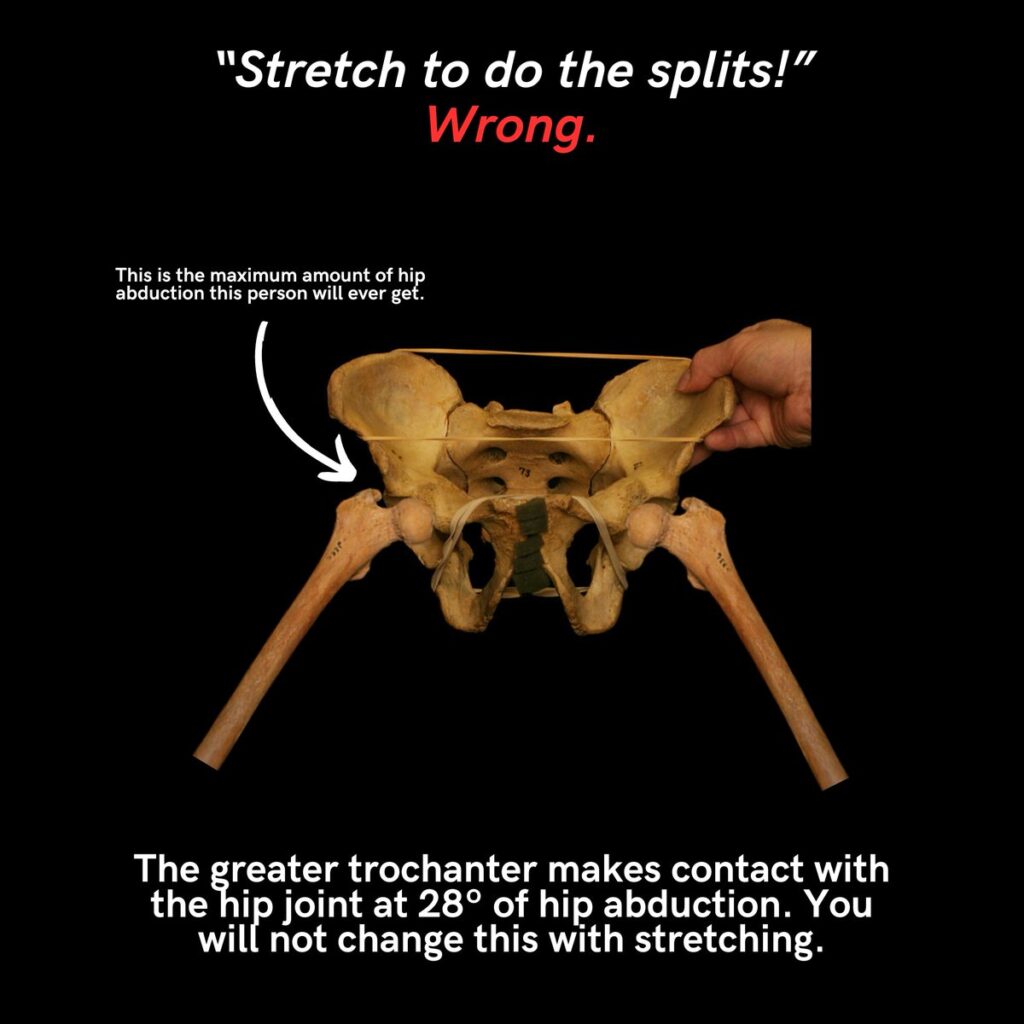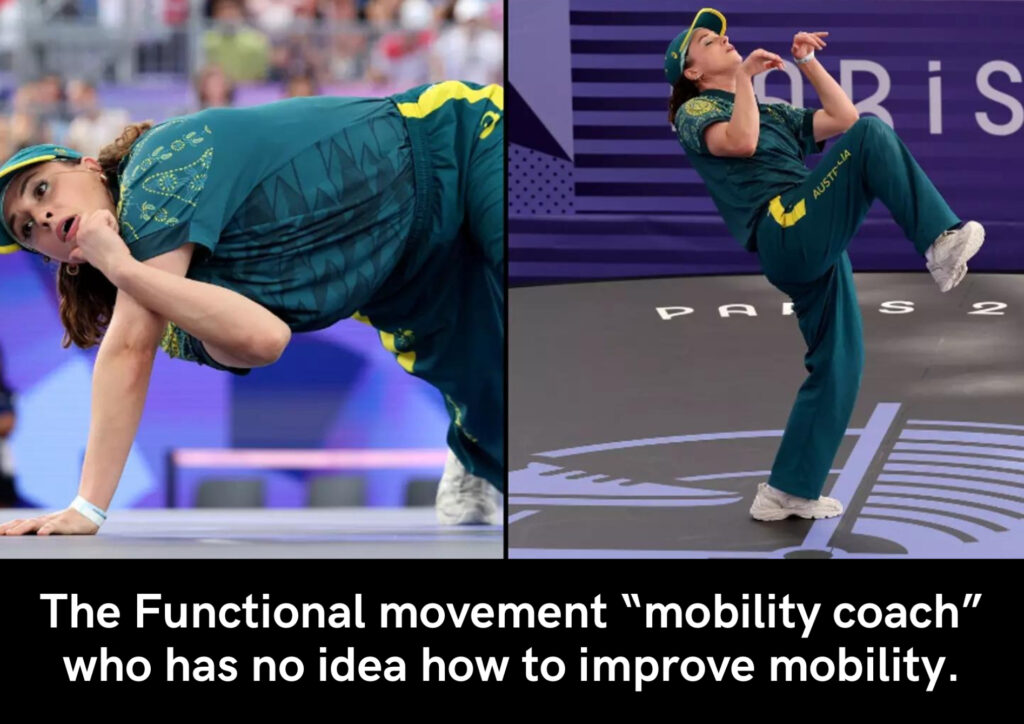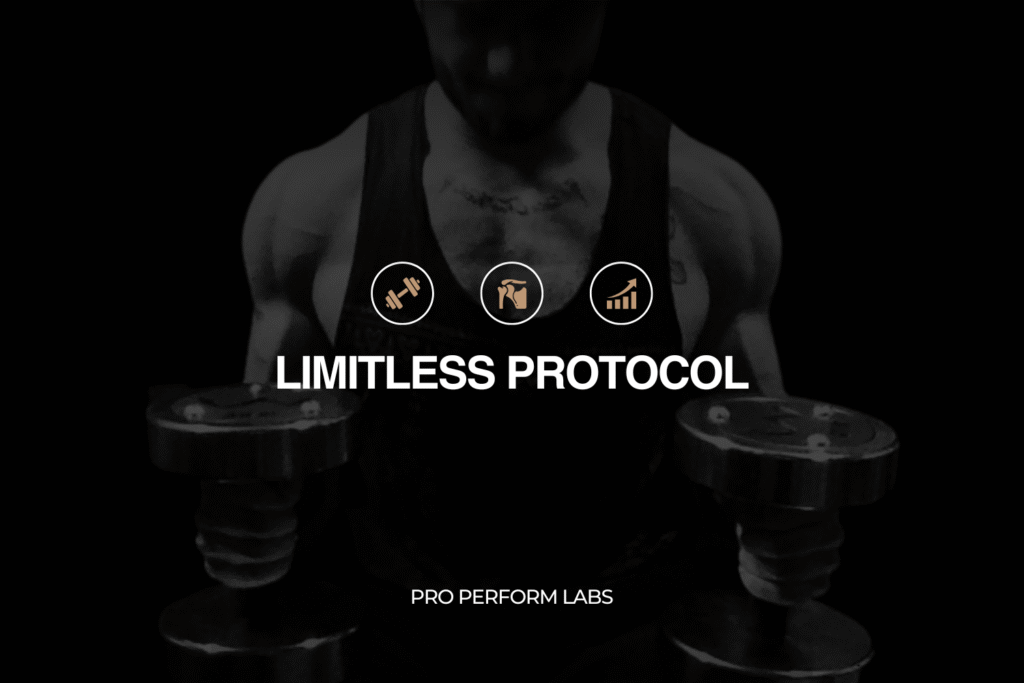Mobility issues hold you back from living life to the fullest.
Whether that’s poor athletic performance on the court or course… limited range of motion in the gym… or frustration and discomfort during simple day to day life.
And like most intelligent people:
You may turn to stretching to improve your mobility, because it’s common wisdom that stretching is the key to improving flexibility and preventing injury.
But what if I told you…
Stretching is NOT the most effective solution? In fact, it might even be holding you back.

Now I understand this is a touchy subject that defies the status quo, so please put on your critical thinking hat, keep an open mind, and read till the end so you can gain a full understanding.
If you promise me you’ll do that?
I promise this article will put you ahead of 99% of people.

“The majority of men are not capable of thinking, but only of believing, and… are not accessible to reason, but only to authority”
Arthur Shopenhaur
The Problem with Stretching:
Many believe stretching is the key to superior mobility. And it’s what most do when they feel tight or stiff in their muscles. You stretch, feel a release, and assume you’re making progress.
But there’s a significant flaw in this approach:
Stretching Does Not
Improve Muscle Function
Research shows that while stretching increases passive range of motion (ROM), it doesn’t translate into functional mobility.
AKA. Active range of motion (AROM)
And what’s more… studies found stretching can increase injury risk because it forces joints to into positions without the strength to support them (Herbert & Gabriel, 2002; Behm et al., 2016).
Here’s what I mean, in depth…
1/ Limited Functional Mobility Gains:
Stretching primarily increases passive range of motion (ROM), but it doesn’t translate into functional mobility. And so you might achieve greater passive flexibility, it won’t improve your ability to perform real-world movements.
A study:
[Medeiros & Martini, 2018; Stathokostas et al., 2012]
What does that really mean? It means you may still struggle to achieve unrestricted movement in daily activities or sports, despite being more “flexible” after stretching.
2/ Increased Risk of Injury:
Anatomy and range of motion are unique. So when stretching, you run the risk of forcing joints further than they are naturally designed to go.
What does that really mean?
It means stretching could actually increase your risk of permanent joint damage, pain, and injury.
An example:
Below, the persons structure limits abduction to 28º. They’ll never be able to do the splits, and trying to force beyond this range will cause some very unpleasant permanent consequences.

3/ Impaired Neuromuscular Response:
Stretching doesn’t improve your ability to control your body. And it can even impair neuromuscular coordination and response times, which leads to delayed reactions during physical activity.
A study:
[Minshull et al., 2013; Sharman et al., 2006]
What does that really mean?
It means it can negatively impact your overall performance, make movements less precise and increase the likelihood of injury. Bad.
4/ Temporary and Short-Lived Effects:
The effects of stretching are short-lived because it “numbs” your nervous system and “alters” your acute settings. The benefits of stretching quickly diminish unless performed constantly.
A study:
[Blazevich et al., 2014; Freitas et al., 2017]
What does that really mean?
It means you’ll waste a ton of time stretching continuously to maintain non-functional flexibility gains, without reaping long-term benefits for muscle strength, functional mobility, or performance.
There Is A Far
Superior Solution
Now, I don’t know about you….
I don’t want to waste time improving ROM for the sake of it. I want to lead an active, pain-free life, avoid injuries, and ensure my body ages well.
IF those are your goals too…
Resistance training > stretching and Here’re 5 (research-backed) reasons why:
#1 – Functional Mobility Gains:
Did you know resistance training improves active range of motion (ROM)? This leads to functional improvements that positively impact your performance.
Here’s a cool study to prove it:
[Behm et al., 2016; Opplert & Babault, 2017]
What does that really mean?
“Active range” is functional mobility you can actually use. Much more useful than the non-functional “passive” range of motion you gain from doing your daily stretches.
#2 – Enhanced Strength and Stability:
Unlike stretching (which doesn’t make you stronger) resistance training strengthens muscles through their full range of motion.
Cue second cool study below:
[Kenney et al., 2012; Zatsiorsky & Prilutsky, 2012]
What does that really mean?
This means you actually get stronger, and build a resilient body capable of handing intense physical activity. Other benefits include reduced injury risk, and more muscle mass if you’re eating enough.
#3 – Reduced Injury Risk:
When stretching, you run the risk of pushing joints into harmful and unnatural positions… causing joint damage, pain or injury.
With strength training on the other hand, you only go into positions you can actively get into yourself via muscle contraction.
Check this study out:
[Behm et al., 2016; Magnusson, 1998]
What does that really mean?
It means you’re staying within a safe active range of motion, which protects your joints, and promotes joint health and longevity (in other words, avoiding joint damage and irritation).
#4 – Improved Neuromuscular Control:
While stretching may impair neuromuscular response times, Resistance training enhances neuromuscular coordination and control. This leads to safer and more precise movement patterns.
Yep. You read that right:
[Minshull et al., 2013; Dal Maso et al., 2012]
What does that really mean?
It means you gain better control over your movements, which helps prevent injuries and improves your overall performance.
#5 – Long-Term Flexibility and Mobility:
If you want lasting mobility improvements, resistance training helps you do that by adapting muscles and joints. Whereas stretching’s effects are often short-lived because stretching just temporarily alters your “current settings”.
Another study:
[Leite et al., 2017; Monteiro et al., 2008]
What does that really mean?
It means you build mobility that lasts, allowing you to move freely and perform at your best without the constant need for stretching.
To Summarise
So we’ve identified resistance training is superior to stretching if you want functional mobility that helps you:
- Live an active pain-free lifestyle where you can train, play sport, and live without feeling limited or frustrated
- Avoid future injuries, nagging pains or aches that could slow you down and destroy your quality of life.
- Optimise joint function, health, and longevity so your body doesn’t break down as you age.
But you’re probably left wondering…
“what kind of resistance training should I do exactly?”. Because resistance training can mean a lot of things can’t it?
Let me be clear:
I’m not talking about “gymbro splits”, crossfit cleans, or those weird body weight drills that make you look like a breakdancer at the 2024 Paris Olympics (WTF was that by the way?…)

Instead, I use a powerful 3 step mobility system that’s taken me around 5-6 years to develop (can’t remember exactly when I started building it).
Up until now, this system has been exclusively reserved for my high-performing clients. But it it’s something you’re interested in, I’d be happy to walk you through how it works.
It’s perfect if you want to:
- Live an active pain-free lifestyle – it’ll enable you to enjoy your favorite sports and activities without the constant worry of pain, injury, or physical limitations.
- Improve health and longevity – Ensure your joints, muscles, and overall well-being are preserved so you live healthier, better and longer.
- Perform at your best – It’ll keep your body resilient and strong so you can push your physical limits in the gym, or on the course or court.
If you like the sound of that, and you’d like my help to get out of pain, restore mobility and build lasting strength…
Click here to book a free appointment.
Till next time,
— Ollie E.



